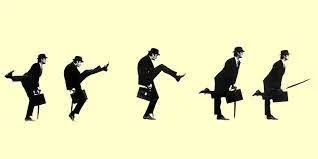Asymmetry and Imbalance IS important (and probably fixable)
Most days, someone comes into my clinic and amongst other complaints, will say they feel likes things are “out of balance.”
One side feels weak, pain along different areas, a friend has noticed they walk funny etc etc.
Instinctively, we understand that if things are out of balance then there is probably going to be some knock on effect.
Oddly, there’s a pretty reasonable push in the health space, for professionals to vindicate imbalance as a cause of dysfunction.
The argument being, organs aren’t balanced side to side, the body isn’t symmetrical, plenty of people with scoliosis don’t have dysfunction etc.
These arguments aren’t wrong.
But firstly, plenty of research has pointed out that imbalance, is in fact, correlated with a higher risk of injury. Particularly when looking at imbalance in athletes.
And this might be where the rubber hits the road.
Whether or not the levels of imbalance you have go on to create pain or dysfunction (I’d argue that the imbalance is already indicative of dysfunction), may depend on the demands you are placing your body under.
Repetitive sporting load, where a similar movement pattern always performed, under fatigue and high levels of demand, are likely to highlight the problems that not having stuff work how they should, can cause.
But if you already move in a variety of ways, and allow your body to experience full ranges of motion, without large levels of load and fatigue, maybe imbalance might not pose as big a problem. Having said that, these are usually the people that come to me after forced rest, or having taken it easy for a while, saying things like “I don’t get why I’m more sore than when I was exercising.” Imbalance doesn’t love long periods of sitting as much as it doesn’t enjoy heavy repetitive load.
My second issue with this, which is usually my face to face argument with these therapists, is, how do we know how much balance we can restore until we try? It’s one thing to say the body is asymmetrical, but how asymmetrical should it be?
I often give the example here, that if a patient walked into your clinic, completely leaning to one side, would you not look to try and straighten this person up. If your a therapist reading this, you’d be aware that the biopsychosocial perspective loves to reinforce the resilience of the body and change client perspectives around how dysfunction is perceived, but sometimes things are just a little bit shit, and paying $150 for a pep talk and a chat must leave the patients of these therapists pretty miffed. Sometimes we just need to have tools to fix the stuff (which is a word these people dislike a lot).
While I respect the ideas the biopsychosocial perspective brings to the table (and I might rant a bit more on this another time), it seems that often it’s the inexperienced therapist vying to use these methods, and the “body is asymmetrical anyway” ideas, to not treat someone, are probably a little scared to have a crack.
At the end of the day, we know very little about the human body and all of us are just taking educated guesses anyhow. Anyone who says they are doing anymore than that is lying anyway.
How even is this for you side to side??
That got a little more ranty than intended, but my end point. Imbalance is something that is worth chasing, up until the point that we can’t chase it anymore. It may be the reason that the niggle that can’t be rid of sticks around.

